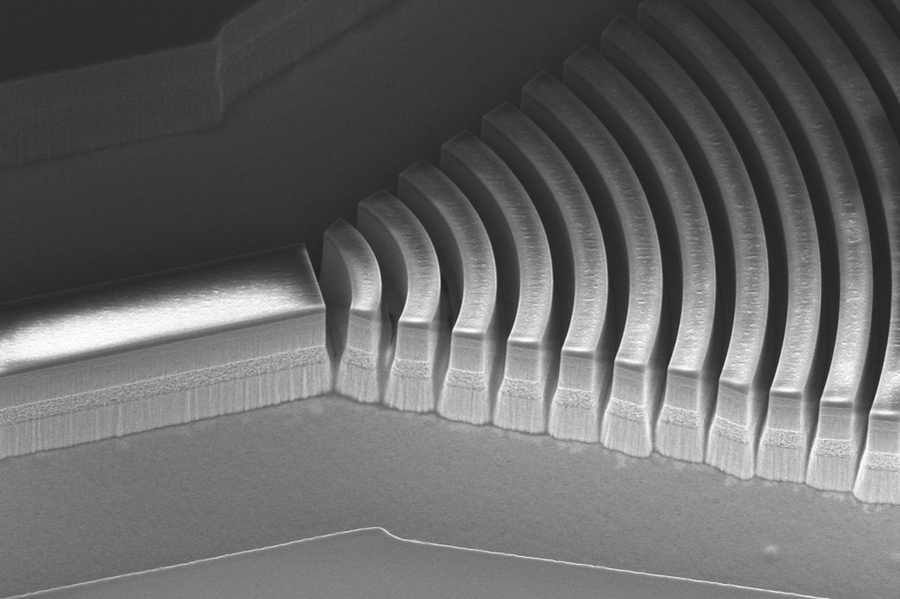Identifying hazardous chemicals in the air is becoming faster, more accurate, and fully portable thanks to groundbreaking research from MIT. Research recently published in Nature shows how ultrabroadband infrared frequency comb technology is setting unprecedented benchmarks for speed and precision in chemical detection, all within a compact and scalable device.

Image Credit: MIT
Understanding Optical Frequency Combs
Optical frequency combs are advanced lasers emitting a spectrum of light frequencies, spaced evenly like the teeth of a comb. This unique feature makes them powerful tools in spectroscopy, as they allow scientists to pinpoint chemical compounds by analyzing how these compounds absorb or emit light.
For applications such as remote sensors and portable spectrometers, frequency combs offer real-time, highly accurate monitoring of multiple chemicals. Traditionally, however, building compact frequency combs with enough bandwidth for robust, real-world performance has proven challenging.
Tackling the Bandwidth Barrier
The effectiveness of a frequency comb is closely tied to its bandwidth; the broader it is, the more substances it can detect at once. The main obstacle is dispersion, where various light wavelengths travel at different rates, leading to uneven spacing between laser lines and reduced detection accuracy.
Earlier solutions involved adding bulky hardware or relying on design choices that weren’t suitable for miniaturization or mass production, limiting their practicality for portable devices.
A Breakthrough with Double-Chirped Mirrors
Professor Qing Hu and his team at MIT tackled the dispersion issue with a novel double-chirped mirror (DCM). This mirror features layers of material with gradually changing thicknesses, effectively compensating for dispersion and ensuring the laser lines remain perfectly spaced.
- The DCM enables broad bandwidth and stable performance.
- Infrared versions required ultra-precise fabrication and a gold coating for efficient heat dissipation.
- This mirror is built directly onto the laser, making the overall device both compact and durable.
On-Chip Dispersion Measurement: Towards True Portability
The researchers didn’t stop with the mirror. They also introduced an on-chip dispersion measurement platform, removing the need for large, external testing equipment. This innovation makes the system ideal for portable and scalable chemical detection devices, and it allows for quick tuning and prototyping tailored to different needs.
The Impact: Portable, High-Precision Sensing on the Horizon
By merging the DCM with on-chip measurement, the MIT team produced stable infrared frequency combs boasting the broadest bandwidths yet. The result? Portable spectrometers and sensors capable of detecting multiple chemicals, even in trace amounts, in real time.
This leap forward could change everything from environmental monitoring and industrial safety to secure communications. Since the technology is highly adaptable, it could also expand to other laser systems, opening up even more powerful and versatile applications in the future.
Experts like Professor Jacob B. Khurgin of Johns Hopkins University have hailed the approach as an ingenious solution that brings chip-scale frequency combs much closer to real-world deployment.
Takeaway: A New Era in Chemical Detection
This laser comb technology represents a significant advance in the quest for portable, precise chemical detection. With MIT’s innovative design, the future of real-time, on-the-go chemical analysis looks brighter and much more accessible. Support from DARPA and the Gordon and Betty Moore Foundation underscores the technology’s broad potential and strategic importance.
Source: MIT News

MIT’s Laser Comb Breakthrough: Compact, Precise Chemical Detection for the Future